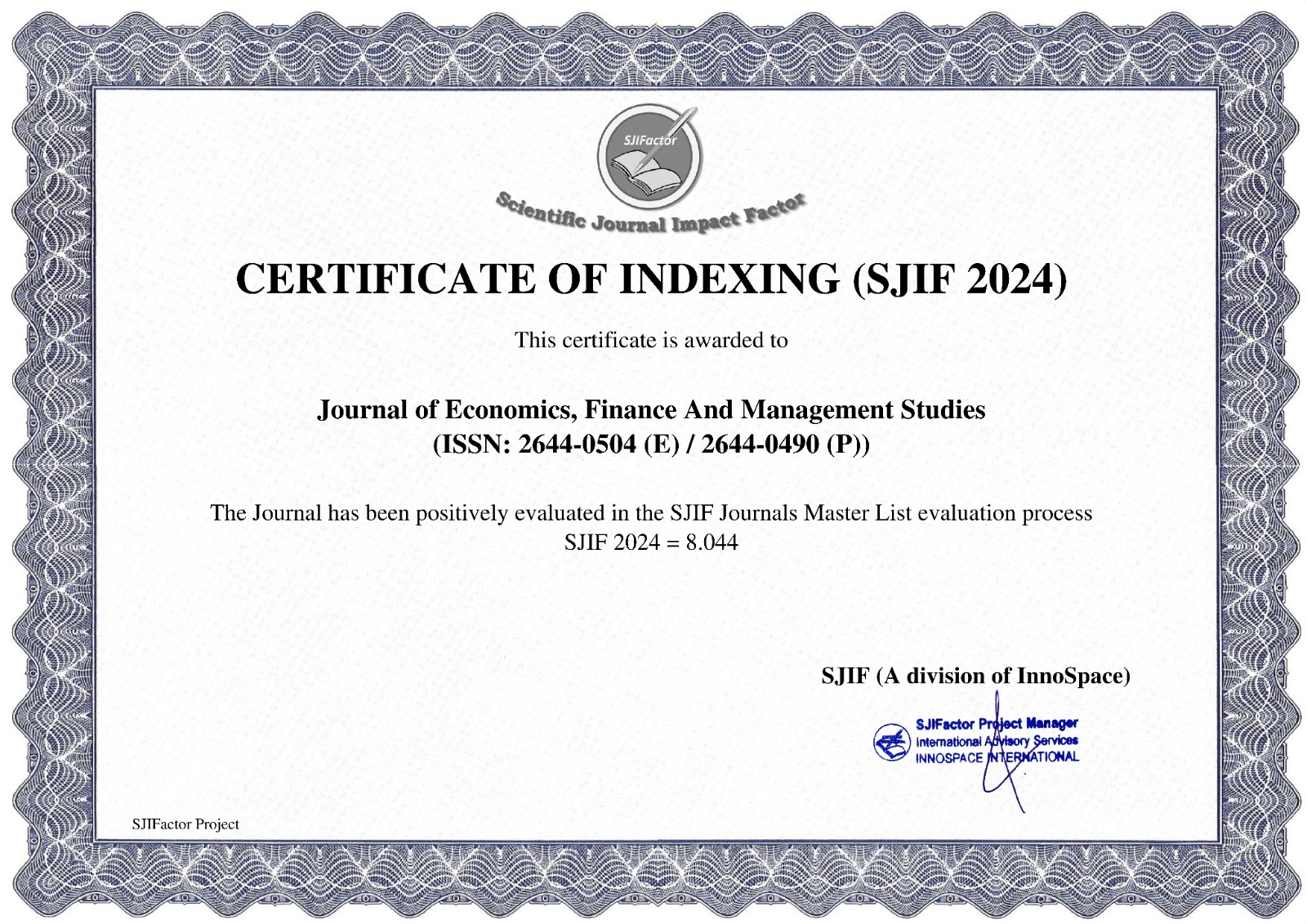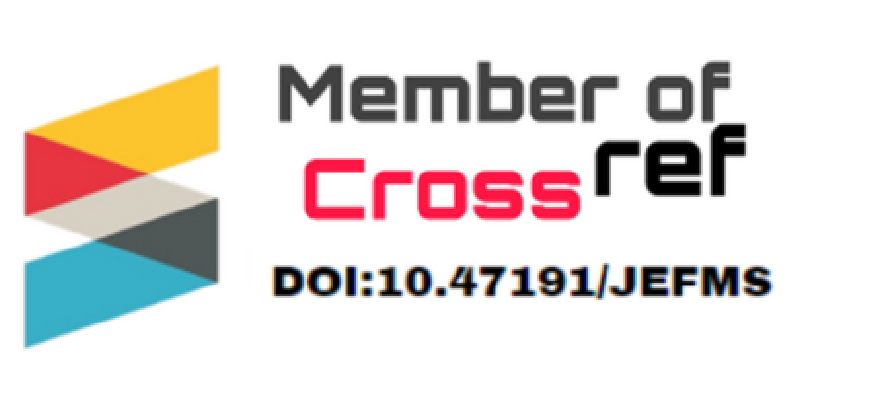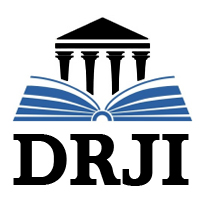Spreading Traditional Cultural Identity Among Music Programs in Vietnam
1Quan Nguyen Van, 2Anh Nguyen Trang Nhat
1Faculty of Business Administration, Academy of Policy and Development, Hanoi, Vietnam
2Hanoi – Amsterdam Highschool for the Gifted, Hanoi, Vietnam
https://doi.org/10.47191/jefms/v8-i3-16
ABSTRACT:
The importance of large-scale music programs such as national and international has far-reaching influence, it is not only considered a great economic contribution to society but also brings about issues of cultural and national identity. Vietnam is a country with an East Asian culture and the integration of traditional cultural elements through such music programs is always emphasized. This study combines mixed research methods with the aim of investigating traditional cultural identity through elements in national-level music programs or higher in Vietnam, thereby assessing their impact on the audience's intention to attend these music programs. First, the authors qualitatively analyze case studies of national and international music programs in Vietnam and finds that traditional cultural identity is clearly expressed through elements such as costumes, dance and themes, from which the authors proceed to develop research hypotheses. Most of the studies on this topic are qualitative studies, so it is difficult to form a scale. Therefore, the authors combines the method of in-depth expert interviews with the three contents presented to form quantitative measurement scales for costumes, dance and themes. Next, through a survey of 306 audiences, the authors found a significant impact of costumes, dance and themes on intention to attend the music programs in Vietnam. From this, some important implications have been proposed for spreading traditional cultural identity through elements in music programs
KEYWORDS:
Costumes, dances, music programs, themes, traditional cultural identity
REFERENCES:
1) Abreu-Novais, M, & Arcodia, C. (2013). Music festival motivators for attendance - Developing an agenda for research. International Journal of Event Management Research, 8(1), 34-48.
2) Baily, J. (2001). Learning to perform as a research technique in ethnomusicology. British journal of ethnomusicology, 10(2), 85-98.
3) Barz, G. F., & Cooley, T. J. (2008). Shadows in the field: New perspectives for fieldwork in ethnomusicology. Oxford University Press.
4) Bennett, A. (2017). Music, space and place: popular music and cultural identity. Routledge.
5) Bhabha, H. K. (2012). The location of culture. Routledge.
6) Blacking, J. (1979). The study of man as music-maker. BLACKING, John; KEALIINOHOMOKO, Joann W. The Performing Arts: Music and Dance. Paris, New York: Walter de Gruyter.
7) Bohlman, P. V. (2002). World Music: A Very Short Introduction.
8) Born, G. (2000). Western music and its others: Difference, representation, and appropriation in music. Univ of California Press.
9) Born, G. (2011). Music and the materialization of identities. Journal of Material Culture, 16(4), 376-388.
10) Brown, S. C., & Knox, D. (2017). Why go to pop concerts? The motivations behind live music attendance. Musicae Scientiae, 21(3), 233-249.
11) Caso, F., & Hamilton, C. (2015). Popular culture and world politics. Bristol, UK: E.
12) Castells, M. (2011). The power of identity. John Wiley & Sons.
13) Cohen, A. (2002), Self consciousness: An alternative anthropology of identity. Routledge.
14) D’Agostino, M. E. (2020). Reclaiming and preserving traditional music: aesthetics, ethics and technology. Organised Sound, 25(1), 106-115.
15) Dinh, L. N. (2023). Preserving Folk Music in Community Cultural Events as a Method of Preserving Traditional Heritage:: A Case Study of the Ta Oi Ethnic Group in Thua Thien-Hue Province, Vietnam. Malaysian Journal of Music, 12(1), 34-47.
16) Frith, S. (1998). Performing rites: On the value of popular music. Harvard University Press.
17) García Quiñones, M. (2016). Historical Models of Music Listening and Theories of Audition. Towards an Understanding of Music Listening Outside the Aesthetic Framework.
18) Georgios, L., Aspasia, D., Maria, K., Evgenia, N., & Basiliki, T. (2017). The effectiveness of a music and movement program for traditional dance teaching on primary school students’ intrinsic motivation and self-reported patterns of lesson participation. Mediterranean Journal of Social Sciences, 8(1), 227-236.
19) Hair, J. F., Black, W. C., Babin, B. J., & Anderson, R. E. (2010). Multivariate data analysis: Pearson College division. Person: London, UK.
20) Hall, S. (1990). Cultural identity and diaspora. In J. Rutherford (Ed.), Identity: Community, culture, difference. Lawrence & Wishart, pp. 222-237.
21) Hanoigrapevine. (2024). Finest project 2024 – Monsoon Music Festival. Retrieved February 16, 2025, from https://hanoigrapevine.com/2024/05/finest-project-2024-monsoon-music-festival/
22) Hassan, A., Sohn, G., & MacKenzie, I. S. (2023). Comparison of one-handed and two-handed text entry in virtual reality using handheld controllers. Human Factors in Virtual Environments and Game Design, 101.
23) Hesmondhalgh, D. (2013). Why music matters. John Wiley & Sons.
24) Hesmondhalgh, D., & Baker, S. (2013). Creative labour: Media work in three cultural industries. Routledge.
25) Hou, C. (2024). The Integration of Traditional Music Culture in Modern Informational Music Teaching. Applied Mathematics and Nonlinear Sciences, 9(1).
26) HOZO. (2022). HOZO 2022 International Music Festival: Blending tradition and modernity. Retrieved February 16, 2025, from https://hozomusicfestival.com
27) Kares, J. L. (2016). Performance, Adaptation, Identity: Cantonese Opera Costumes in Vancouver, Canada.
28) Lee, D. (2021). The Role of Music Education in Cultural Preservation, Perpetuation and Development in 21st Century Digital Environments. In Conference: 43rd ANZARME Conference: Unmasking Music Education (online) 2021. At: Melbourne Graduate School of Education and Melbourne Conservatorium of Music, The University of Melbourne in conjunction with Southern Cross University.
29) Lee, K-Y., & Lee, H. (2019). Traditional costume experience at a cultural heritage festival. Tourism Management Perspectives, 32, 100555.
30) Liu, X., & Nie, Z. (2023). Analysis of Factors Influencing the Willingness to Continue Learning in Latin Dance Extracurricular Education during China's Compulsory Education Stage. Journal of Roi Kaensarn Academi, 8(10), 639-648.
31) Masset, J., & Decrop, A. (2024). ‘Tomorrowland’: identity construction and expression through flags and costumes in a music festival. Leisure Studies, 1–20.
32) Mataruse, S. (2017). Transmitting Cultural Identity in Schools through Traditional Music: A Case Study of Three Districts in Zimbabwe. Global Journal of Educational Studies, 3(1), 61-70.
33) Ministry of Culture, Sports and Tourism. (2021). Phát huy giá trị dân gian, truyền thống trong lĩnh vực âm nhạc. Vietnam.vn. https://www.vietnam.vn/phat-huy-gia-tri-dan-gian-truyen-thong-trong-linh-vuc-am-nhac
34) Nettl, B. (2005). The study of ethnomusicology: Thirty-one issues and concepts. University of Illinois Press.
35) Nguyen, N. A. (2020). Xoan singing – A cultural heritage needs to be preserved and promoted for community benefits. Vietnam Institute of Musicology. https://vienamnhac.vn/heritage/xoan-singing/articles/xoan-singing-%E2%80%93-a-cultural-heritage-needs-to-be-preserved-and-promoted-for-cummunity-benefits
36) Nguyen, V. T., & Nguyen, M. T. (2022). The impact of globalization on culture in Vietnam: Problems and solutions. NeuroQuantology, 20(11), 5376.
37) Nunnally, J. C. (1978). Psychometric Theory 2nd edition (New York: McGraw).
38) Ong, A. (1999). Flexible citizenship: The cultural logics of transnationality. Duke UP.
39) Phạm, T. (2016). Trang phục dân tộc trên sân khấu biểu diễn ca nhạc: Nỗi lo phai sắc. Công an Nhân dân. Retrieved February 16, 2025, from https://cand.com.vn/dien-dan-van-nghe-cong-an/Trang-phuc-dan-toc-tren-san-khau-bieu-dien-ca-nhac-Noi-lo-phai-sac-i408377/
40) Regan, N., Carlson, J., & Rosenberger, P. J. (2012). Factors Affecting Group-Oriented Travel Intention to Major Events. Journal of Travel & Tourism Marketing, 29(2), 185–204.
41) Rice, T. (2007). Reflections on music and identity in ethnomusicology. Muzikologija, 1(7), 17-38.
42) Rice, T. (2013). Ethnomusicology: A very short introduction. Oxford University Press.
43) Santaella, M. A. (2022). Popular Music in East and Southeast Asia: Sonic (under) currents and Currencies. Sunway University Press, 3.
44) Slobin, M. (1992). Micromusics of the West: A comparative approach. Ethnomusicology, 36(1), 1-87.
45) Small, C. (1998). Musicking: The meanings of performing and listening. Wesleyan University Press.
46) Stokes, M. (2004). Music and the global order. Annual Review of Anthropology, 33(1), 47-72.
47) Stryker, S. (2001). Traditional symbolic interactionism, role theory, and structural symbolic interactionism: The road to identity theory. In Handbook of sociological theory (pp. 211-231). Boston, MA: Springer US.
48) Swanwick, K. (1995). Music Matters: A New Philosophy of Music Education. In David J. Elliott, British Journal of Music Education, 12(3), 287-290. Oxford University Press.
49) Trehub, S. E., Becker, J., & Morley, I. (2015). Cross-cultural perspectives on music and musicality. Philosophical Transactions of the Royal Society B: Biological Sciences, 370(1664), 20140096.
50) Turino, T. (2008). Music as social life: The politics of participation. University of Chicago Press.
51) UNESCO. (2018). Reggae music of Jamaica. UNESCO Intangible Cultural Heritage.
52) Van Dyck, E., Ponnet, K., Van Havere, T., Hauspie, B., Dirkx, N., Schrooten, J., Waldron, J., Grabski, M., Freeman, T.P., Curran, H.V., & Neve, J.D. (2023). Substance Use and Attendance Motives of Electronic Dance Music (EDM) Event Attendees: A Survey Study. International Journal of Environmental Research and Public Health, 20(3), 1821.
53) Vietnam Institute of Musicology. (2021). Traditional music. Truy cập từ https://vienamnhac.vn/articles/traditional-music
54) Vietnamvn (2023). Bảo tồn và phát huy âm nhạc truyền thống Việt Nam trong bối cảnh hội nhập quốc tế. Retrieved from https://www.vietnam.vn/phat-huy-gia-tri-dan-gian-truyen-thong-trong-linh-vuc-am-nhac
55) Woody, R. H., Liu, X., Rom, B., Smith, B., & Wassemiller, J. (2021). Musical engagement and identity: exploring young adults’ experiences, tastes, and beliefs. Music Education Research, 23(4), 430-442.
















